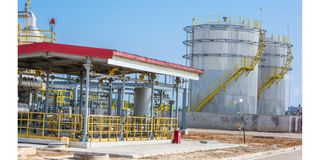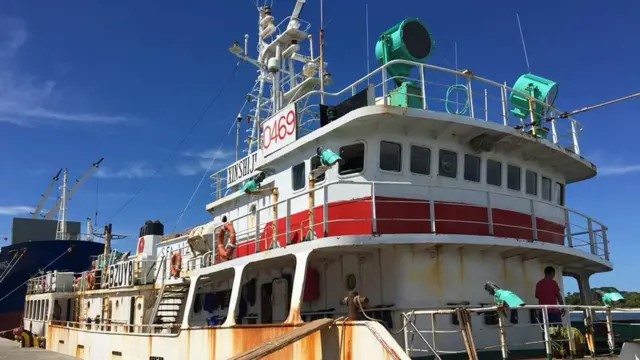Prime
Tanzania's gas revenue jumps 161pc driven by Mnazi Bay gas fields

Mnazi Bay natural gas processing facility. PHOTO | PURA
What you need to know:
- The data shows that by 2024, Mnazi Bay alone accounted for nearly 77 percent of total gas revenue, contributing over $111 million, more than triple the $33 million generated by the older Songo Songo gas plant
Dar es Salaam. Tanzania’s natural gas sector has witnessed remarkable revenue growth over the past five years, with earnings increasing from $55.1 million in 2020 to a record $144.1 million in 2024, representing an impressive 161 percent rise.
The Tanzania in Figures report by the National Bureau of Statistics (NBS) says that the Mnazi Bay Gas Plant in the southern Mtwara Region has become the country’s main source of gas revenue, significantly outpacing the long-established Songo Songo plant.
The data shows that by 2024, Mnazi Bay alone accounted for nearly 77 percent of total gas revenue, contributing over $111 million, more than triple the $33 million generated by the older Songo Songo gas plant.
This notable shift highlights successful investments, sound regulatory oversight, and recent ownership changes that are driving substantial growth at Mnazi Bay, enhancing Tanzania’s energy independence and strengthening national finances.
The trajectory of gas revenue growth reflects Tanzania’s evolving energy landscape. From $55.1 million in 2020, national gas revenue grew steadily to $58.9 million in 2021 and $71.3 million in 2022, before nearly doubling in 2023 to $124.5 million, and ultimately reaching $144.1 million in 2024.
Mnazi Bay has been the principal engine of this growth. Its revenues surged from $34.1 million in 2020 to $111 million in 2024, marking a staggering 226 percent increase over five years.
In contrast, Songo Songo, which was once the backbone of Tanzania’s gas supply, has seen fluctuating earnings, from $21 million in 2020, a low of $16 million in 2021, to a brief peak of $45 million in 2023, before falling again in 2024.
For years, Songo Songo, active since the early 2000s, symbolised Tanzania’s emerging gas industry, primarily supplying gas for power generation in Dar es Salaam.
But the mantle has now clearly passed to Mnazi Bay in the southern region of Mtwara.
This rising dominance is also linked to recent changes in ownership. In February 2024, the government, through the Tanzania Petroleum Development Corporation (TPDC), increased its stake in Mnazi Bay by acquiring an additional 20 percent, raising its total share to 40 percent.
This move followed Wentworth Resources’ decision to divest its 31.9 percent holding. Meanwhile, Maurel & Prom raised its stake from 48.6 to 60 percent by acquiring the remaining 11.9 percent from Wentworth.
Industry analysts and energy experts point to multiple factors driving Mnazi Bay’s rapid growth, with significant credit attributed to robust regulatory frameworks and prudent operational decisions.
The Director General of the Petroleum Upstream Regulatory Authority (PURA), Mr Charles Sangweni, elaborated on the regulatory body’s vital role in fostering this growth.
“Our job is to review work plans and budgets, followed by strict oversight of both quality and costs,” he said.
“Right now, our oversight efficiency has improved significantly. This has led to reduced costs, better quality, and ongoing revenue growth,” Mr Sangweni added.
He emphasised PURA’s commitment to financial accountability, stating, “We perform effective audits to identify any signs of inflated or unjustified costs.”
Beyond financial oversight, PURA actively promotes local involvement.
“We ensure the use of local content, particularly domestic experts. This strategy also helps reduce costs, as hiring foreign experts usually raises production expenses,” noted Mr Sangweni.
The completion and operation of key gas infrastructure projects, notably the Mtwara–Dar es Salaam gas pipeline, have also played a crucial role.
“TPDC has greatly contributed by rapidly developing infrastructure and supporting gas production and distribution,” Mr Sangweni acknowledged.
This solid infrastructure enables Mnazi Bay to transport larger volumes of gas to key demand centres, especially for power generation and industrial usage in Dar es Salaam and along the pipeline corridor.
Additionally, a growing industrial sector is seeking more affordable and reliable energy sources, increasingly turning to natural gas, with Mnazi Bay emerging as a key supplier for factories and major commercial operations.
“There is significant enthusiasm among citizens and industries for gas use. Plus, government policies are actively encouraging clean energy adoption,” Mr Sangweni observed.
While tabling the ministerial budget for the 2025/2026 fiscal year, the Deputy Prime Minister and Minister for Energy, Dr Doto Biteko, saied that the Mnazi Bay block in Mtwara Region has continued to produce natural gas, with a total of 25.51 billion cubic feet produced by April 2025, adequately meeting demand during that period.
The Songo Songo block produced 21.93 billion cubic feet of natural gas by April 2025, also satisfying its respective demand during the same timeframe.



